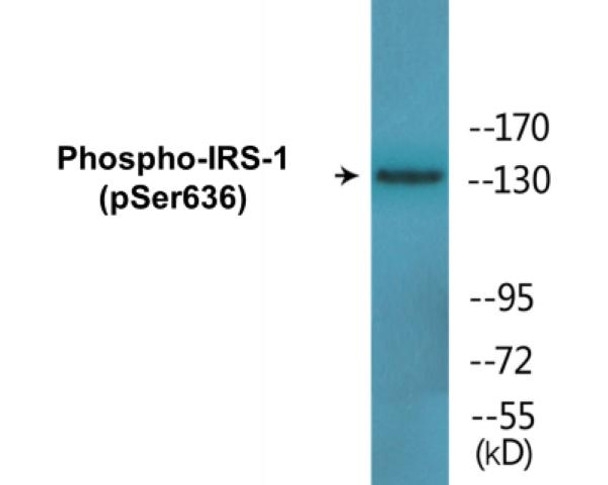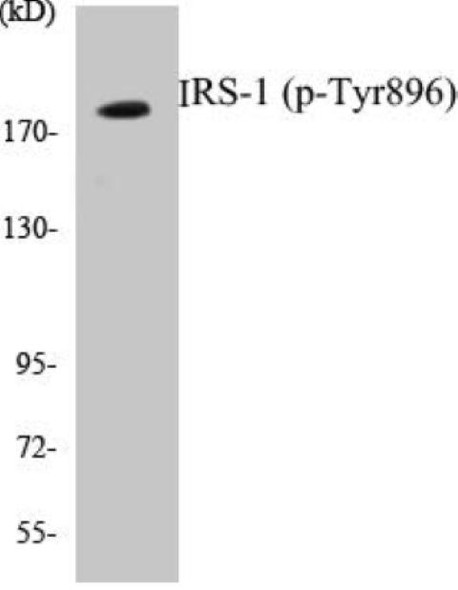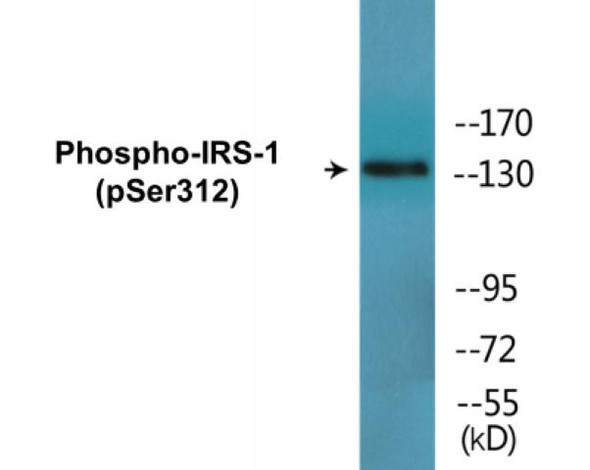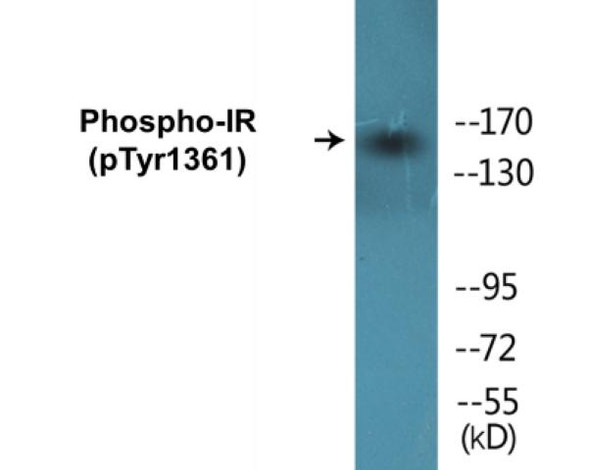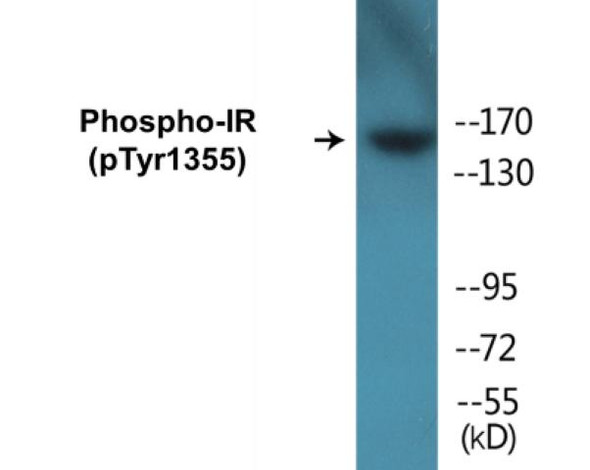IRS-1 (Phospho-Ser636) Colorimetric Cell-Based ELISA Kit
- SKU:
- CBCAB00255
- Product Type:
- ELISA Kit
- ELISA Type:
- Cell Based Phospho Specific
- Reactivity:
- Human
- Mouse
- Rat
- Detection Method:
- Colorimetric
Description
IRS-1 (Phospho-Ser636)Colorimetric Cell-Based ELISA Kit
The Human IRS-1 Phospho-Ser636 Colorimetric Cell-Based ELISA Kit is specifically designed for the accurate detection of phosphorylated IRS-1 protein levels at the Ser636 site in cell lysates. This kit offers high sensitivity and specificity, ensuring precise and reproducible results for a variety of research applications.IRS-1 (insulin receptor substrate 1) is a key protein involved in insulin signaling pathways, playing a pivotal role in glucose metabolism and cellular growth. Phosphorylation of IRS-1 at the Ser636 residue is known to regulate its function and impact insulin sensitivity, making it a valuable target for studying diabetes, obesity, and other metabolic disorders.
With this ELISA kit, researchers can accurately quantify phosphorylated IRS-1 levels in cell samples, providing valuable insights into the molecular mechanisms underlying insulin resistance and metabolic dysfunction. This kit is essential for studies aiming to uncover new therapeutic interventions for diabetes and related conditions.
| Product Name: | IRS-1 (Phospho-Ser636) Colorimetric Cell-Based ELISA |
| Product Code: | CBCAB00255 |
| ELISA Type: | Cell-Based |
| Target: | IRS-1 (Phospho-Ser636) |
| Reactivity: | Human, Mouse, Rat |
| Dynamic Range: | > 5000 Cells |
| Detection Method: | Colorimetric 450 nm |
| Format: | 2 x 96-Well Microplates |
The IRS-1 (Phospho-Ser636) Colorimetric Cell-Based ELISA Kit is a convenient, lysate-free, high throughput and sensitive assay kit that can detect IRS-1 protein phosphorylation and expression profile in cells. The kit can be used for measuring the relative amounts of phosphorylated IRS-1 in cultured cells as well as screening for the effects that various treatments, inhibitors (ie. siRNA or chemicals), or activators have on IRS-1 phosphorylation.
Qualitative determination of IRS-1 (Phospho-Ser636) concentration is achieved by an indirect ELISA format. In essence, IRS-1 (Phospho-Ser636) is captured by IRS-1 (Phospho-Ser636)-specific primary antibodies while the HRP-conjugated secondary antibodies bind the Fc region of the primary antibody. Through this binding, the HRP enzyme conjugated to the secondary antibody can catalyze a colorimetric reaction upon substrate addition. Due to the qualitative nature of the Cell-Based ELISA, multiple normalization methods are needed:
| 1. | A monoclonal antibody specific for human GAPDH is included to serve as an internal positive control in normalizing the target absorbance values. |
| 2. | Following the colorimetric measurement of HRP activity via substrate addition, the Crystal Violet whole-cell staining method may be used to determine cell density. After staining, the results can be analysed by normalizing the absorbance values to cell amounts, by which the plating difference can be adjusted. |
| Database Information: | Gene ID: 3667, UniProt ID: P35568, OMIM: 125853/147545, Unigene: Hs.471508 |
| Gene Symbol: | IRS1 |
| Sub Type: | Phospho |
| UniProt Protein Function: | IRS1: an adaptor protein that is one of the major substrates of the insulin receptor kinase. Contains multiple tyrosine phosphorylation motifs that serve as docking sites for SH2-domain-containing proteins including phosphatidylinositol 3-kinase p85 subunit and GRB-2. Phosphorylated on ser/thr residues by kinases including JNK and IKK. |
| UniProt Protein Details: | Protein type:Adaptor/scaffold; Motility/polarity/chemotaxis Chromosomal Location of Human Ortholog: 2q36 Cellular Component: intracellular membrane-bound organelle; cytoplasm; plasma membrane; caveola; cytosol; nucleus Molecular Function:insulin-like growth factor receptor binding; protein binding; signal transducer activity; protein kinase C binding; phosphoinositide 3-kinase binding; SH2 domain binding; transmembrane receptor protein tyrosine kinase adaptor protein activity; insulin receptor binding Biological Process: response to peptide hormone stimulus; phosphoinositide 3-kinase cascade; nerve growth factor receptor signaling pathway; positive regulation of glycogen biosynthetic process; negative regulation of insulin receptor signaling pathway; glucose homeostasis; signal transduction; negative regulation of insulin secretion; response to insulin stimulus; positive regulation of glucose import; mammary gland development; positive regulation of mesenchymal cell proliferation; positive regulation of cell proliferation; protein kinase B signaling cascade; epidermal growth factor receptor signaling pathway; phosphoinositide-mediated signaling; fibroblast growth factor receptor signaling pathway; positive regulation of phosphoinositide 3-kinase activity; positive regulation of fatty acid beta-oxidation; cellular response to insulin stimulus; insulin-like growth factor receptor signaling pathway; regulation of gene expression; insulin receptor signaling pathway; innate immune response; positive regulation of insulin receptor signaling pathway; lipid catabolic process; positive regulation of cell migration Disease: Diabetes Mellitus, Noninsulin-dependent |
| NCBI Summary: | This gene encodes a protein which is phosphorylated by insulin receptor tyrosine kinase. Mutations in this gene are associated with type II diabetes and susceptibility to insulin resistance. [provided by RefSeq, Nov 2009] |
| UniProt Code: | P35568 |
| NCBI GenInfo Identifier: | 547738 |
| NCBI Gene ID: | 3667 |
| NCBI Accession: | P35568.1 |
| UniProt Related Accession: | P35568 |
| Molecular Weight: | |
| NCBI Full Name: | Insulin receptor substrate 1 |
| NCBI Synonym Full Names: | insulin receptor substrate 1 |
| NCBI Official Symbol: | IRS1 |
| NCBI Official Synonym Symbols: | HIRS-1 |
| NCBI Protein Information: | insulin receptor substrate 1; IRS-1 |
| UniProt Protein Name: | Insulin receptor substrate 1 |
| Protein Family: | Isoleucine--tRNA ligase |
| UniProt Gene Name: | IRS1 |
| UniProt Entry Name: | IRS1_HUMAN |
| Component | Quantity |
| 96-Well Cell Culture Clear-Bottom Microplate | 2 plates |
| 10X TBS | 24 mL |
| Quenching Buffer | 24 mL |
| Blocking Buffer | 50 mL |
| 15X Wash Buffer | 50 mL |
| Primary Antibody Diluent | 12 mL |
| 100x Anti-Phospho Target Antibody | 60 µL |
| 100x Anti-Target Antibody | 60 µL |
| Anti-GAPDH Antibody | 60 µL |
| HRP-Conjugated Anti-Rabbit IgG Antibody | 12 mL |
| HRP-Conjugated Anti-Mouse IgG Antibody | 12 mL |
| SDS Solution | 12 mL |
| Stop Solution | 24 mL |
| Ready-to-Use Substrate | 12 mL |
| Crystal Violet Solution | 12 mL |
| Adhesive Plate Seals | 2 seals |
The following materials and/or equipment are NOT provided in this kit but are necessary to successfully conduct the experiment:
- Microplate reader able to measure absorbance at 450 nm and/or 595 nm for Crystal Violet Cell Staining (Optional)
- Micropipettes with capability of measuring volumes ranging from 1 µL to 1 ml
- 37% formaldehyde (Sigma Cat# F-8775) or formaldehyde from other sources
- Squirt bottle, manifold dispenser, multichannel pipette reservoir or automated microplate washer
- Graph paper or computer software capable of generating or displaying logarithmic functions
- Absorbent papers or vacuum aspirator
- Test tubes or microfuge tubes capable of storing ≥1 ml
- Poly-L-Lysine (Sigma Cat# P4832 for suspension cells)
- Orbital shaker (optional)
- Deionized or sterile water
*Note: Protocols are specific to each batch/lot. For the correct instructions please follow the protocol included in your kit.
| Step | Procedure |
| 1. | Seed 200 µL of 20,000 adherent cells in culture medium in each well of a 96-well plate. The plates included in the kit are sterile and treated for cell culture. For suspension cells and loosely attached cells, coat the plates with 100 µL of 10 µg/ml Poly-L-Lysine (not included) to each well of a 96-well plate for 30 minutes at 37°C prior to adding cells. |
| 2. | Incubate the cells for overnight at 37°C, 5% CO2. |
| 3. | Treat the cells as desired. |
| 4. | Remove the cell culture medium and rinse with 200 µL of 1x TBS, twice. |
| 5. | Fix the cells by incubating with 100 µL of Fixing Solution for 20 minutes at room temperature. The 4% formaldehyde is used for adherent cells and 8% formaldehyde is used for suspension cells and loosely attached cells. |
| 6. | Remove the Fixing Solution and wash the plate 3 times with 200 µL 1x Wash Buffer for five minutes each time with gentle shaking on the orbital shaker. The plate can be stored at 4°C for a week. |
| 7. | Add 100 µL of Quenching Buffer and incubate for 20 minutes at room temperature. |
| 8. | Wash the plate 3 times with 1x Wash Buffer for 5 minutes each time. |
| 9. | Add 200 µL of Blocking Buffer and incubate for 1 hour at room temperature. |
| 10. | Wash 3 times with 200 µL of 1x Wash Buffer for 5 minutes each time. |
| 11. | Add 50 µL of 1x primary antibodies Anti-IRS-1 (Phospho-Ser636) Antibody, Anti-IRS-1 Antibody and/or Anti-GAPDH Antibody) to the corresponding wells, cover with Parafilm and incubate for 16 hours (overnight) at 4°C. If the target expression is known to be high, incubate for 2 hours at room temperature. |
| 12. | Wash 3 times with 200 µL of 1x Wash Buffer for 5 minutes each time. |
| 13. | Add 50 µL of 1x secondary antibodies (HRP-Conjugated AntiRabbit IgG Antibody or HRP-Conjugated Anti-Mouse IgG Antibody) to corresponding wells and incubate for 1.5 hours at room temperature. |
| 14. | Wash 3 times with 200 µL of 1x Wash Buffer for 5 minutes each time. |
| 15. | Add 50 µL of Ready-to-Use Substrate to each well and incubate for 30 minutes at room temperature in the dark. |
| 16. | Add 50 µL of Stop Solution to each well and read OD at 450 nm immediately using the microplate reader. |
(Additional Crystal Violet staining may be performed if desired – details of this may be found in the kit technical manual.)

